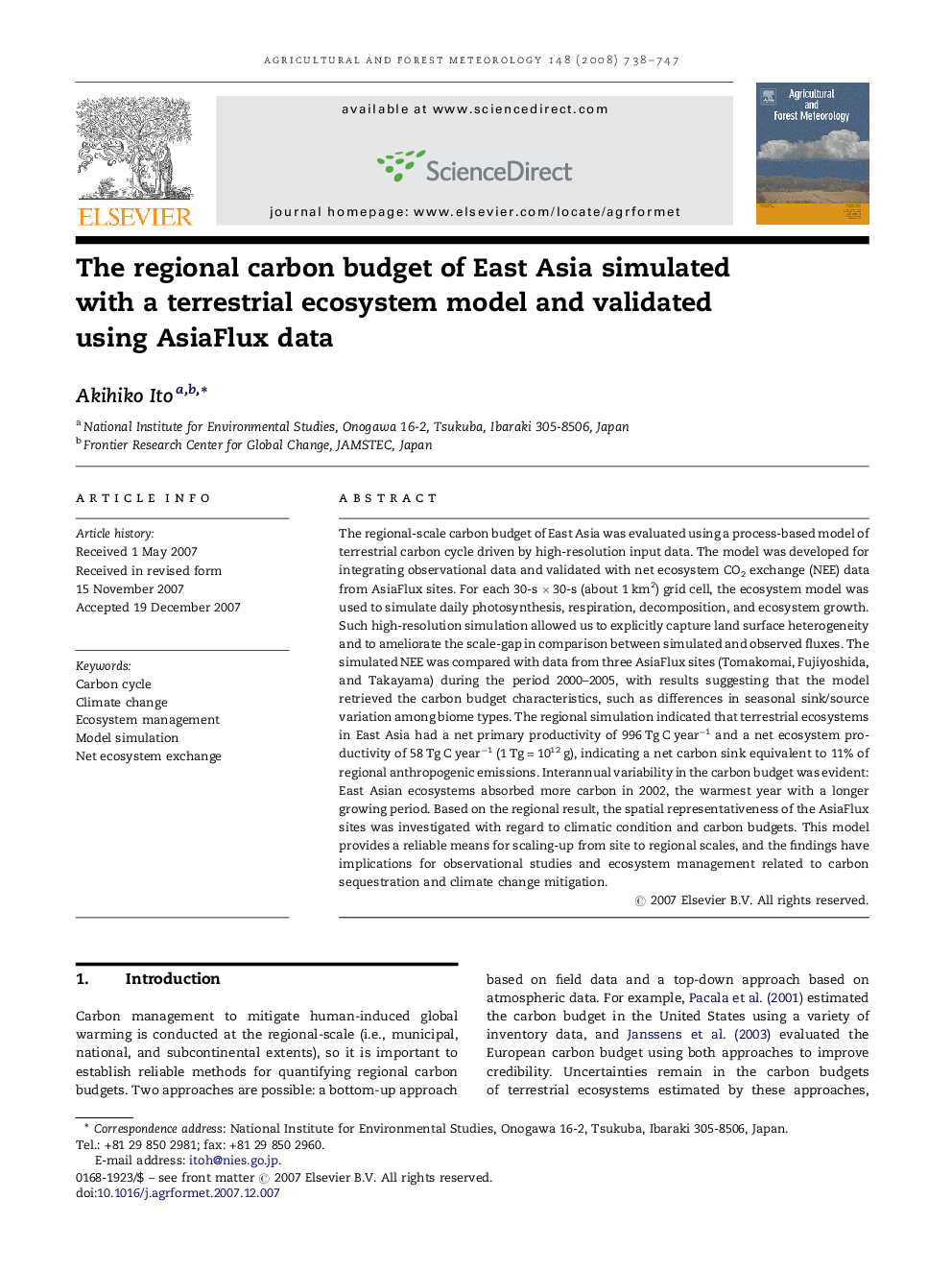| Article ID | Journal | Published Year | Pages | File Type |
|---|---|---|---|---|
| 82766 | Agricultural and Forest Meteorology | 2008 | 10 Pages |
The regional-scale carbon budget of East Asia was evaluated using a process-based model of terrestrial carbon cycle driven by high-resolution input data. The model was developed for integrating observational data and validated with net ecosystem CO2 exchange (NEE) data from AsiaFlux sites. For each 30-s × 30-s (about 1 km2) grid cell, the ecosystem model was used to simulate daily photosynthesis, respiration, decomposition, and ecosystem growth. Such high-resolution simulation allowed us to explicitly capture land surface heterogeneity and to ameliorate the scale-gap in comparison between simulated and observed fluxes. The simulated NEE was compared with data from three AsiaFlux sites (Tomakomai, Fujiyoshida, and Takayama) during the period 2000–2005, with results suggesting that the model retrieved the carbon budget characteristics, such as differences in seasonal sink/source variation among biome types. The regional simulation indicated that terrestrial ecosystems in East Asia had a net primary productivity of 996 Tg C year−1 and a net ecosystem productivity of 58 Tg C year−1 (1 Tg = 1012 g), indicating a net carbon sink equivalent to 11% of regional anthropogenic emissions. Interannual variability in the carbon budget was evident: East Asian ecosystems absorbed more carbon in 2002, the warmest year with a longer growing period. Based on the regional result, the spatial representativeness of the AsiaFlux sites was investigated with regard to climatic condition and carbon budgets. This model provides a reliable means for scaling-up from site to regional scales, and the findings have implications for observational studies and ecosystem management related to carbon sequestration and climate change mitigation.
